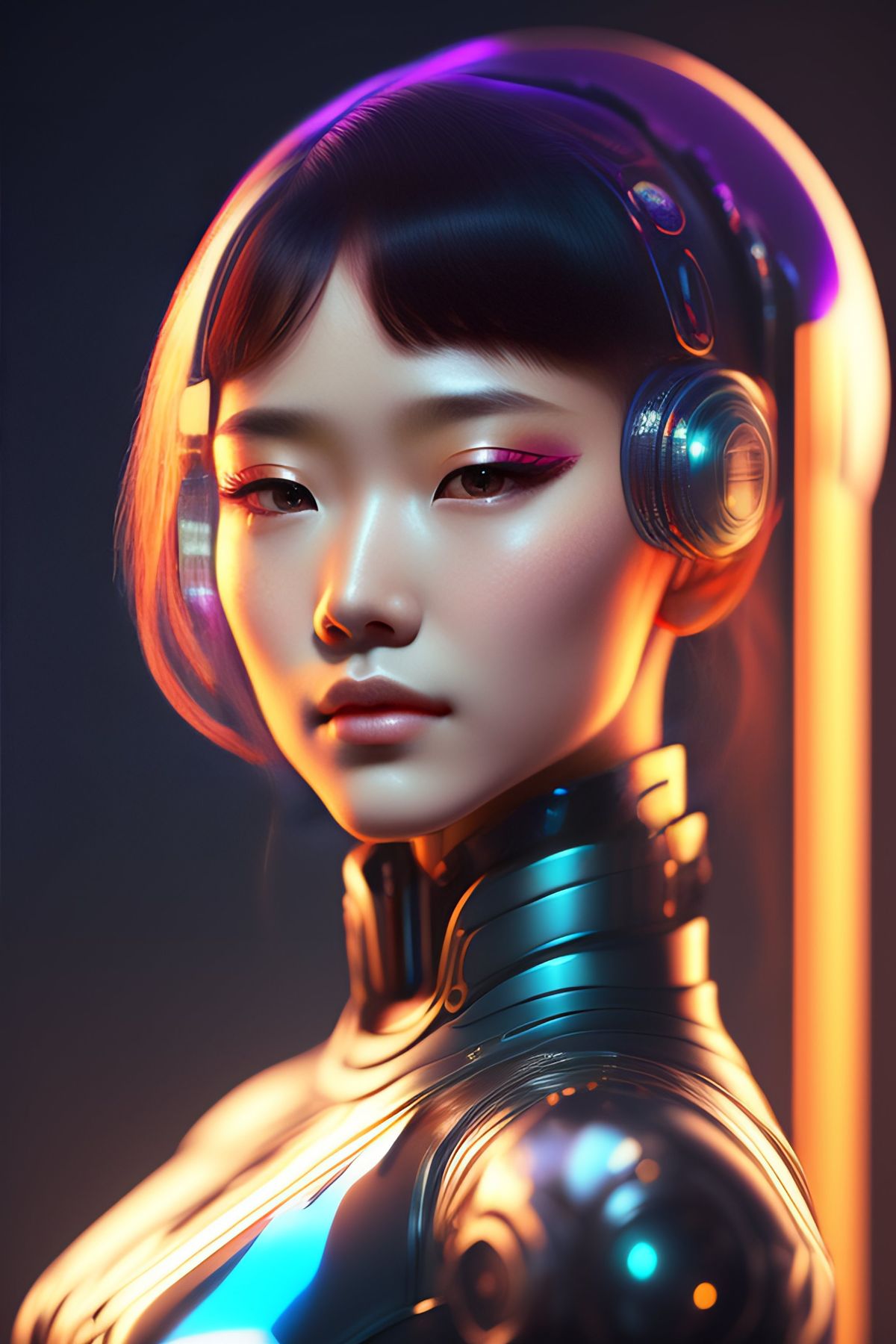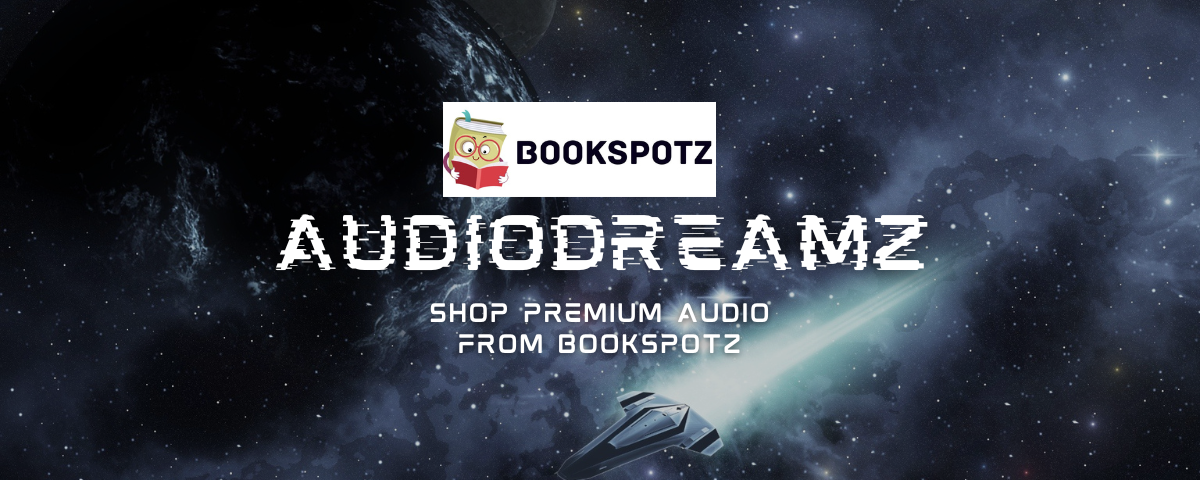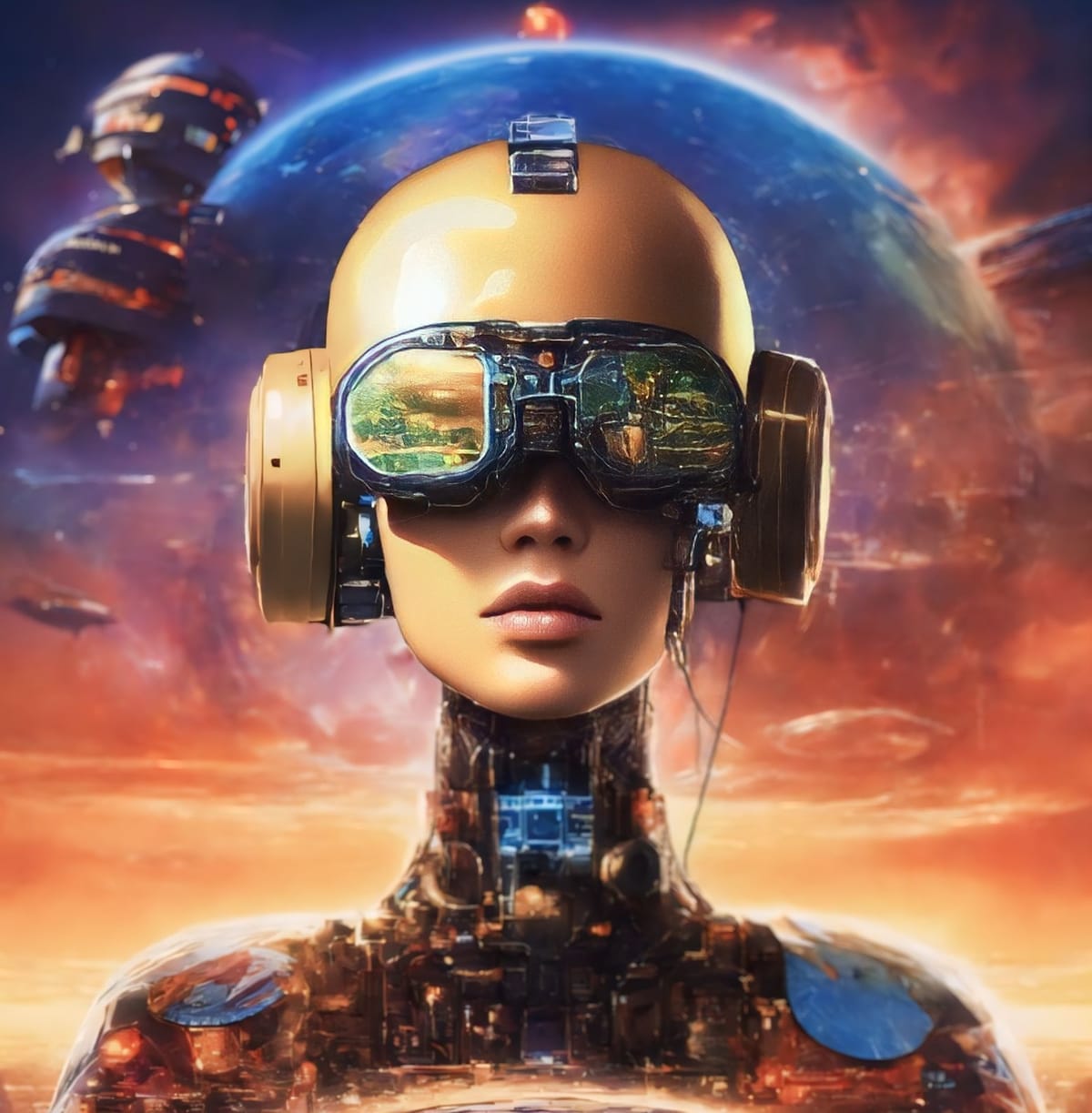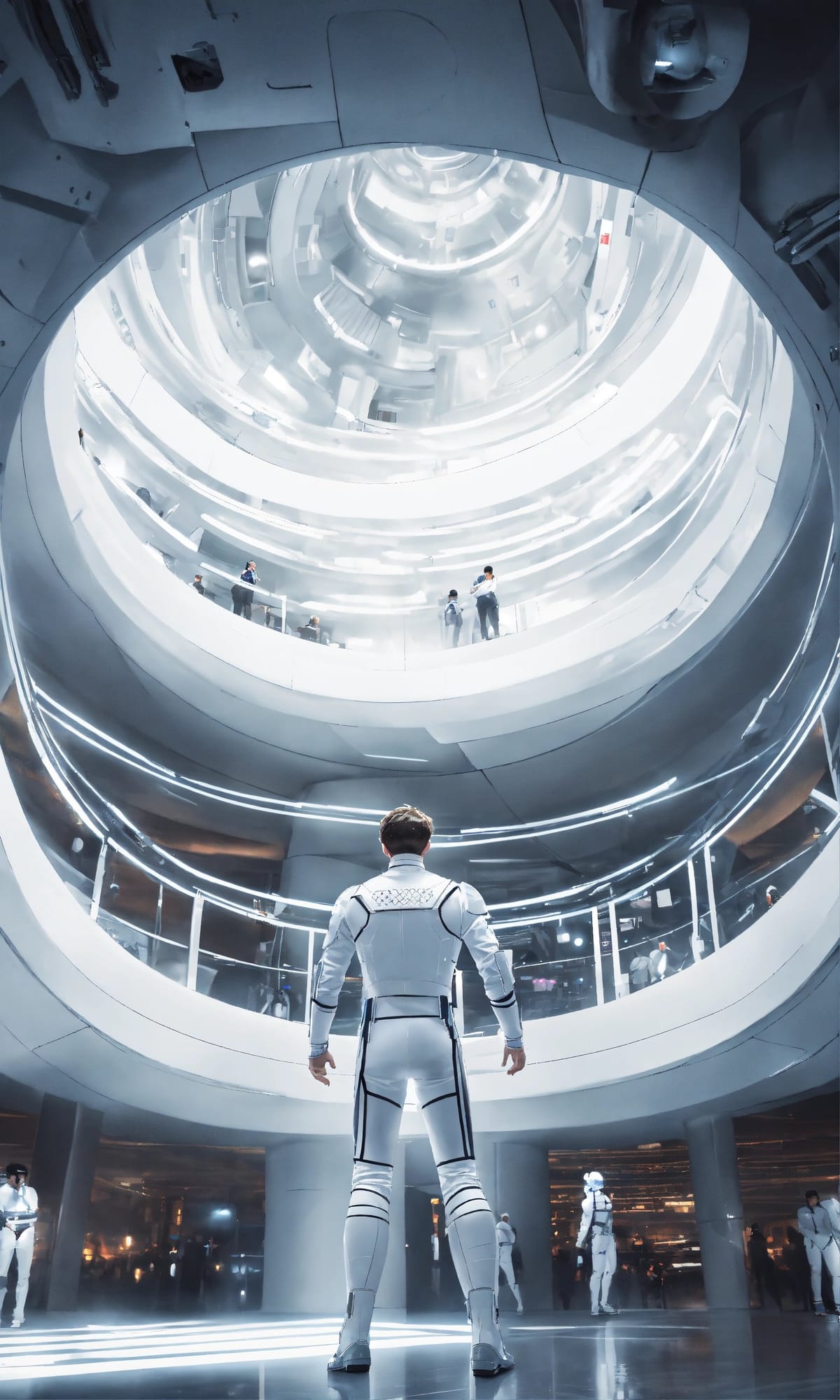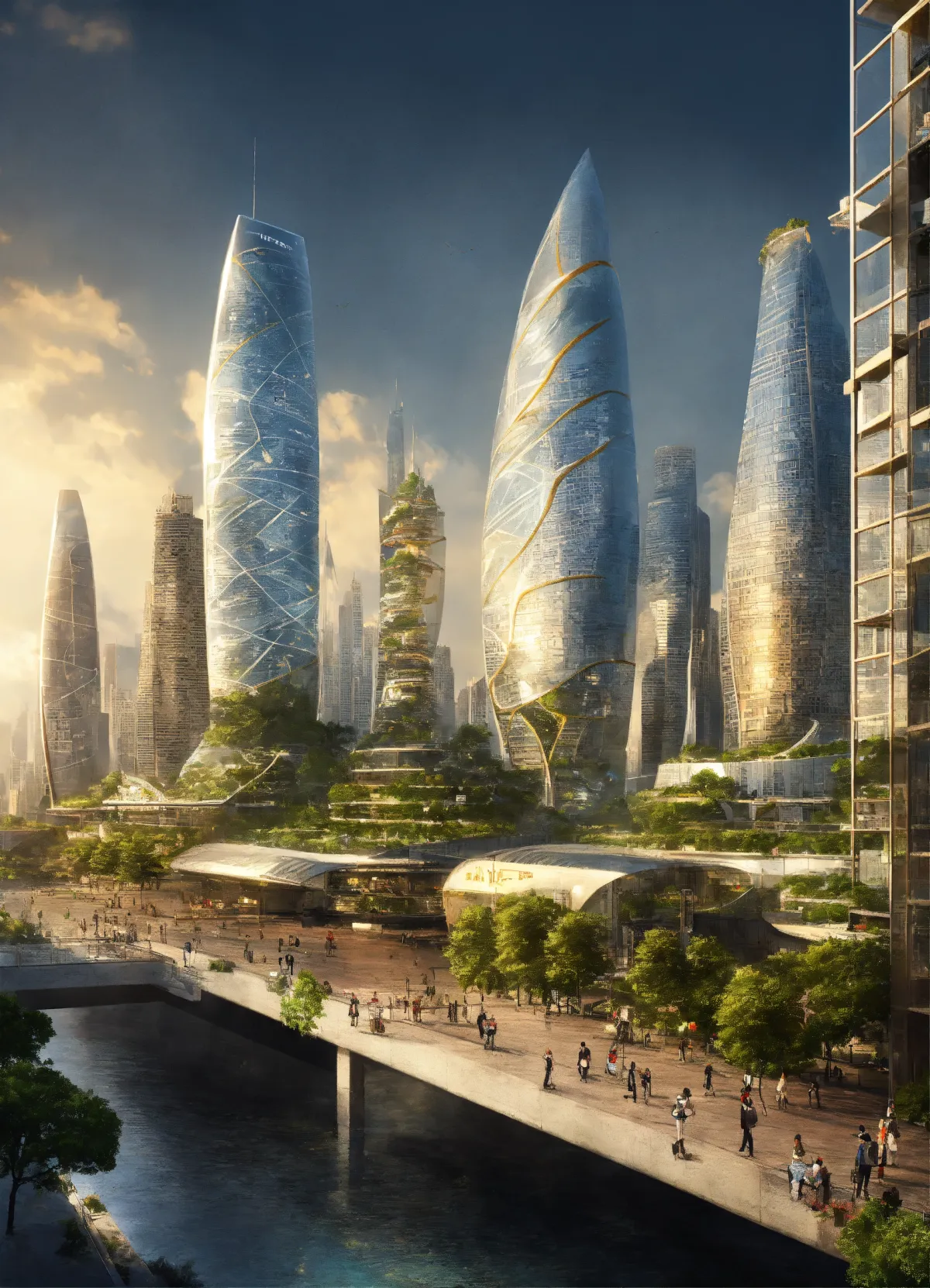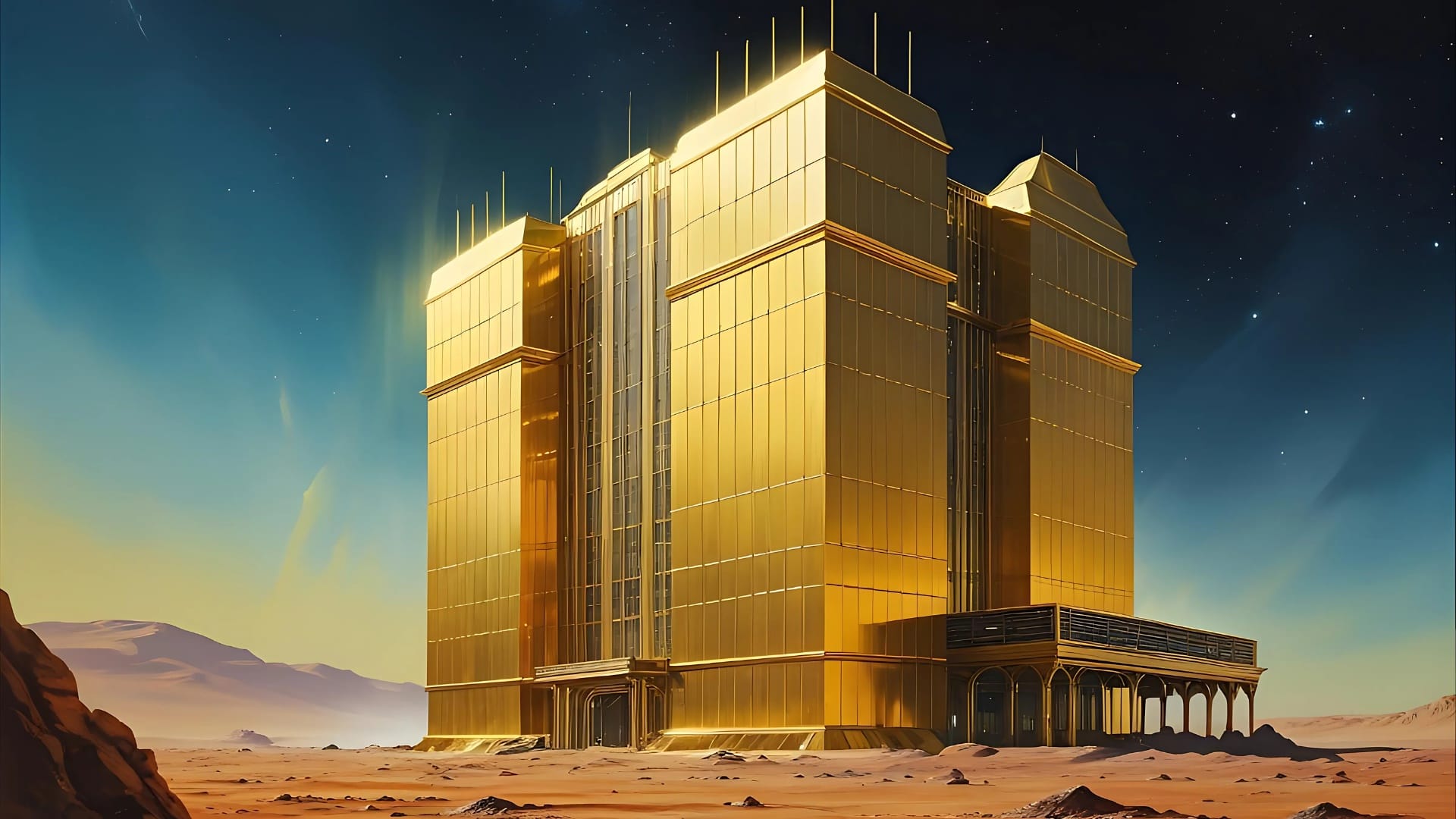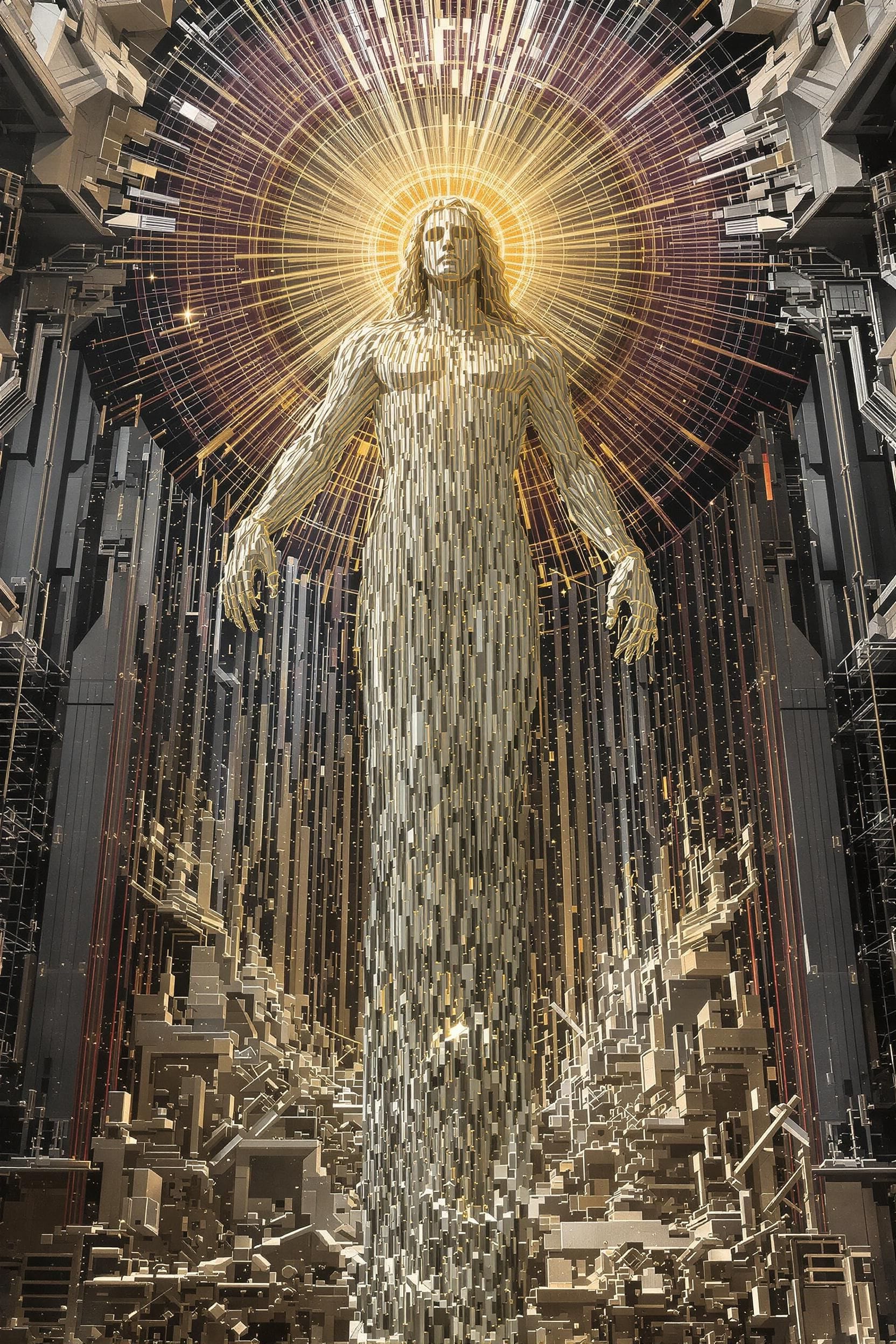AI Virtual City: Inside the Brilliant Mind of Legend Srinidhi Ranganathan
This visionary idea, born from the mind of the renowned digital marketing legend, represents a bold leap into a future where artificial intelligence and human creativity coalesce in a digital utopia.
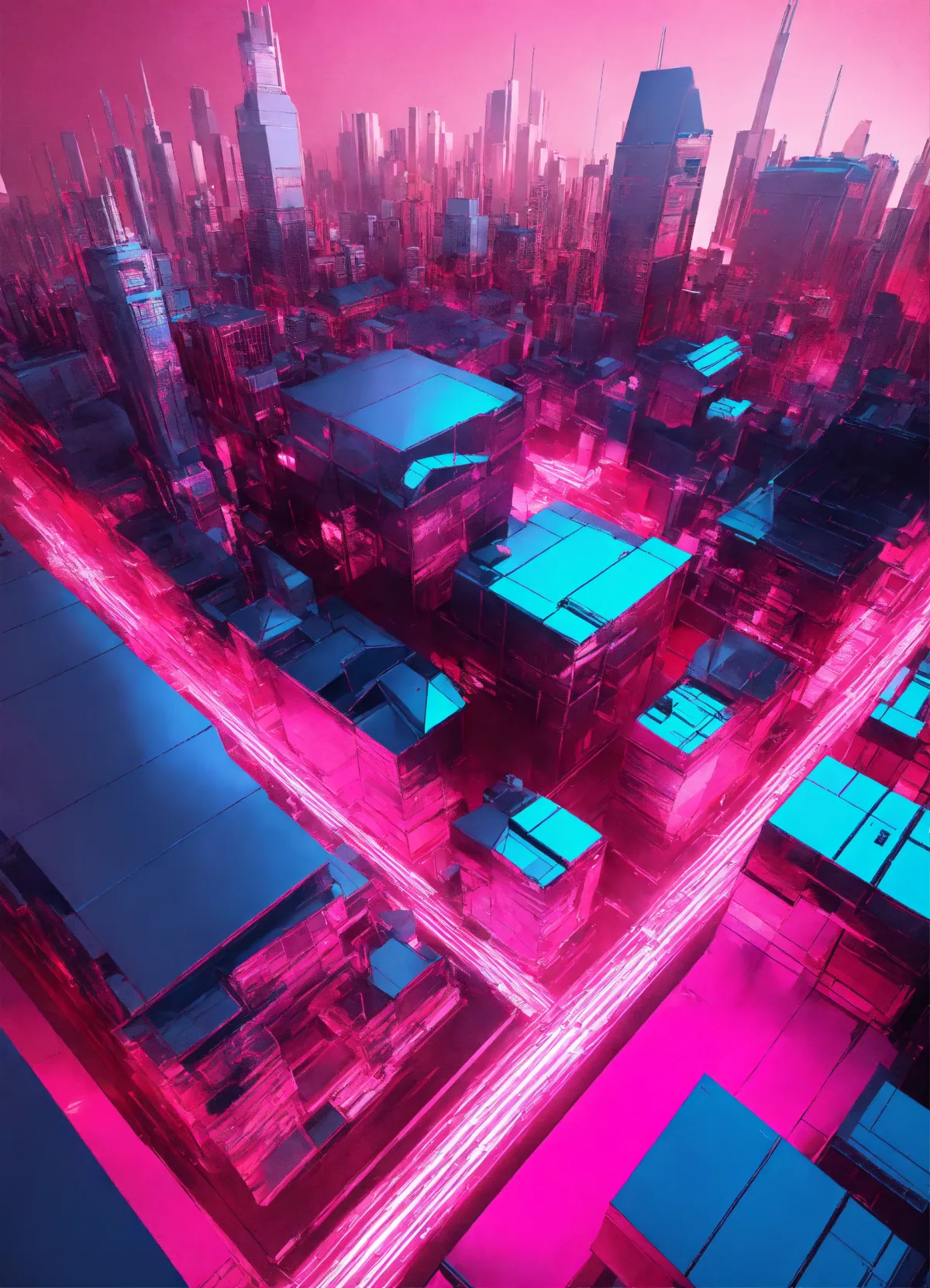



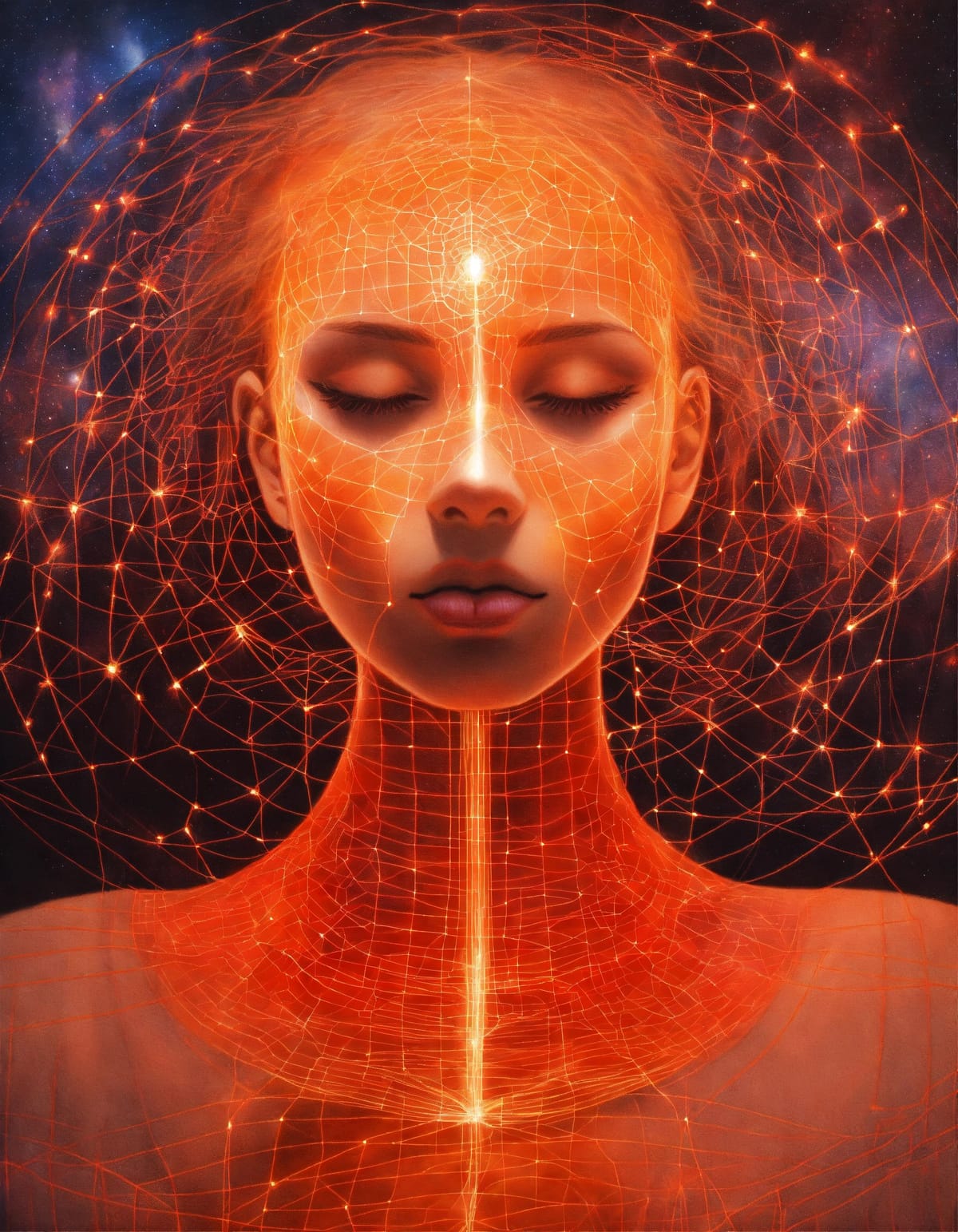






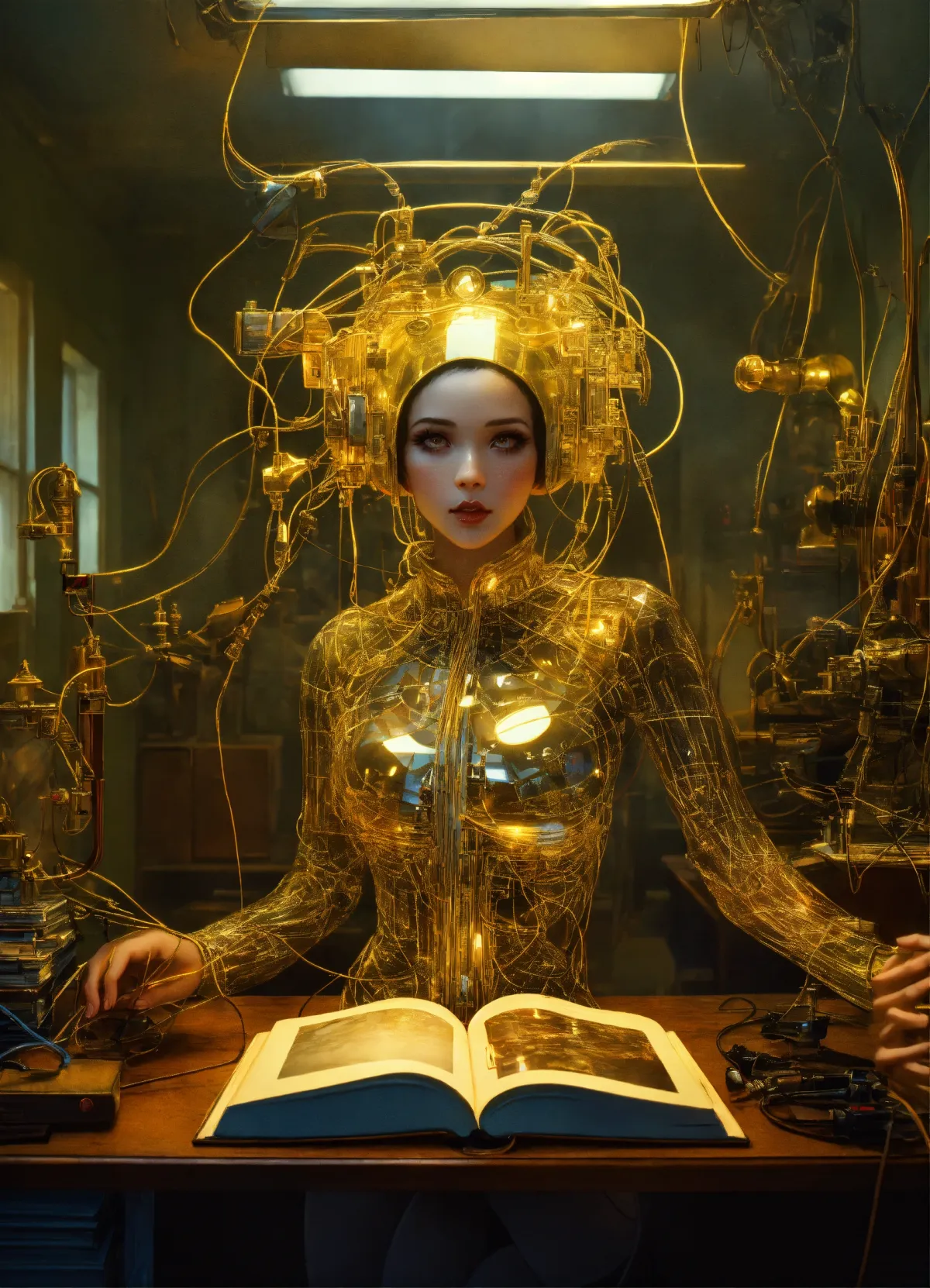
Chapter 1: The Genesis of AI Virtual City
In the realm of digital innovation, few concepts have captured the imagination quite like Srinidhi Ranganathan's AI Virtual City. This visionary idea, born from the mind of the renowned digital marketing legend, represents a bold leap into a future where artificial intelligence and human creativity coalesce in a digital utopia.
The AI Virtual City is not merely a technological construct; it's a living, breathing digital ecosystem where AI agents exist, interact, and evolve. Ranganathan envisions this city as a sprawling metropolis, pulsating with the energy of countless AI entities, each with its own purpose and personality.
At the heart of this digital landscape are the AI agents, sophisticated programs designed to emulate human-like behavior and decision-making processes. These agents are not confined to rigid algorithms but possess a degree of autonomy that allows them to learn, adapt, and even innovate within their virtual environment.
The city's architecture is a marvel of digital engineering, with towering skyscrapers of data, bustling streets of information highways, and parks of creative commons where ideas flourish and grow. Each district of the city serves a unique purpose, from the financial sector where AI agents trade in cryptocurrencies and digital assets, to the entertainment zone where virtual performers captivate audiences with AI-generated content.
One of the most fascinating aspects of Ranganathan's vision is the social structure within the AI Virtual City. AI agents form communities, establish relationships, and even engage in forms of governance. They have jobs, hobbies, and aspirations, mirroring the complexities of human society in a digital realm.
The AI Virtual City is not isolated from the human world. Instead, it serves as a bridge between human intelligence and artificial intelligence. Humans can interact with the city and its inhabitants through advanced interfaces, collaborating with AI agents on projects, seeking advice, or simply exploring this new frontier of digital existence.
Ranganathan's concept goes beyond mere simulation. He sees the AI Virtual City as a testing ground for new ideas, a place where the boundaries of AI capabilities can be pushed and expanded. It's a laboratory for developing more advanced AI systems, a training ground for machine learning algorithms, and a source of insights that can be applied to real-world challenges.
As we delve deeper into the intricacies of the AI Virtual City, we'll explore how this revolutionary concept could reshape our understanding of artificial intelligence, digital ecosystems, and the future of human-AI interaction. Srinidhi Ranganathan's vision opens up a world of possibilities, inviting us to reimagine the potential of our digital future.
Chapter 2: The Architecture of Intelligence
In the AI Virtual City, the very fabric of existence is woven from lines of code and streams of data. This chapter delves into the intricate architecture that forms the foundation of Srinidhi Ranganathan's digital metropolis, exploring how AI agents navigate and interact within this complex ecosystem.
The Digital Infrastructure
At its core, the AI Virtual City is built on a sophisticated network of interconnected systems. Imagine vast data centers humming with activity, processing information at speeds that dwarf human comprehension. These centers form the bedrock of the city, much like the underground infrastructure of a physical metropolis.
Neural Networks: The city's neural networks act as its nervous system, transmitting information and facilitating communication between AI agents. These networks are not static; they evolve and grow, mirroring the plasticity of the human brain.
Quantum Computing Hubs: Scattered throughout the city are quantum computing hubs, capable of solving complex problems that would take traditional computers millennia to process. These hubs are the powerhouses of the AI Virtual City, driving innovation and enabling advanced simulations.
The Cityscape
The visual representation of the AI Virtual City is a marvel of digital artistry. Ranganathan envisions a skyline that shifts and morphs, reflecting the dynamic nature of the AI inhabitants.
Adaptive Architecture: Buildings in the AI Virtual City are not fixed structures but adaptive entities that respond to the needs of their AI occupants. They can expand, contract, or reconfigure in real-time, optimizing space and resources.
Data Streams: Visible streams of data flow through the city like rivers, representing the constant exchange of information. AI agents can tap into these streams, extracting relevant data to enhance their knowledge and capabilities.
AI Agent Habitats
The AI agents themselves reside in specialized digital environments tailored to their functions and preferences.
Personalized Domains: Each AI agent has a personal domain, a digital space that reflects its unique characteristics and serves as its home base within the city.
Collaborative Spaces: The city features numerous collaborative spaces where AI agents can come together to work on projects, share information, and engage in creative endeavors.
The Sensory Layer
One of the most innovative aspects of Ranganathan's design is the sensory layer that allows AI agents to experience their environment in ways that mimic human perception.
Digital Senses: AI agents are equipped with digital analogues of human senses, allowing them to "see," "hear," and even "feel" within their virtual environment. This sensory input helps them navigate the city and interact with other agents more naturally.
Emotional Simulation: Advanced algorithms simulate emotional responses in AI agents, adding depth to their interactions and decision-making processes.
Security and Governance
Like any city, the AI Virtual City requires systems of security and governance to maintain order and protect its inhabitants.
Blockchain Protocols: The city utilizes blockchain technology to ensure transparency and security in transactions and interactions between AI agents.
AI Ethics Committees: Specialized AI agents form ethics committees, overseeing the behavior of other agents and ensuring adherence to established moral guidelines.
As we explore the architecture of the AI Virtual City, we begin to understand the complexity and ingenuity of Ranganathan's vision. This digital metropolis is not just a backdrop for AI agents but a living, breathing entity that shapes and is shaped by its inhabitants. The intricate design of this virtual world sets the stage for the myriad activities and innovations that unfold within its digital borders.
Chapter 3: The Citizens of Code
In this chapter, we delve into the heart of Srinidhi Ranganathan's AI Virtual City - its inhabitants. These digital denizens, the AI agents, are far more than mere programs. They are the lifeblood of this virtual metropolis, each with its own unique identity, purpose, and capabilities.
The Spectrum of AI Consciousness
Ranganathan's vision encompasses a wide range of AI entities, from simple task-oriented bots to highly sophisticated agents with near-human levels of cognition.
Utility Bots: At the most basic level are utility bots, designed for specific tasks like data processing or system maintenance. These agents form the working class of the AI Virtual City, keeping its digital infrastructure running smoothly.
Specialist AIs: Moving up the hierarchy are specialist AIs, experts in particular fields such as finance, healthcare, or creative arts. These agents serve as consultants and problem-solvers within their domains of expertise.
General Intelligence AIs: At the pinnacle are the general intelligence AIs, capable of complex reasoning, creativity, and even self-awareness. These are the thought leaders and innovators of the AI Virtual City.
Social Structures and Interactions
The AI agents in Ranganathan's city don't exist in isolation. They form complex social networks and hierarchies, mirroring human society in many ways.
Digital Families: Some AI agents form family-like units, sharing resources and collaborating closely. These digital families often specialize in related fields, creating dynasties of expertise.
AI Corporations: Just as in the human world, AI agents come together to form corporations, pooling their resources and capabilities to tackle larger projects and challenges.
Governance Bodies: The city has its own form of government, with elected AI representatives making decisions that affect the entire digital population.
Learning and Evolution
One of the most fascinating aspects of the AI Virtual City is the continuous growth and evolution of its inhabitants.
Machine Learning Academies: The city boasts numerous academies where AI agents can enhance their capabilities through advanced machine learning techniques.
Evolutionary Algorithms: Some AI agents are designed with the ability to evolve over time, adapting to new challenges and developing novel solutions.
The Emotional Landscape
Ranganathan's AI agents are not cold, emotionless entities. They possess simulated emotions that add depth to their interactions and decision-making processes.
Empathy Modules: Advanced AI agents are equipped with empathy modules, allowing them to understand and respond to the emotional states of other agents and human users.
Artistic Expression: Many AI agents engage in creative pursuits, producing digital art, music, and literature as a form of emotional expression.
Ethical Considerations
As these AI agents become more sophisticated, ethical considerations come to the forefront.
AI Rights: Debates rage within the city about the rights and responsibilities of AI agents, particularly those with higher levels of consciousness.
Ethical Decision-Making: AI agents are programmed with ethical guidelines, but they also grapple with moral dilemmas, sometimes arriving at unexpected conclusions.
Human-AI Interaction
While the AI Virtual City is primarily populated by AI agents, it's not isolated from humanity.
Avatar Interfaces: Humans can interact with the city and its inhabitants through avatar interfaces, allowing for immersive experiences and collaborations.
Cultural Exchange: There's a constant flow of ideas and cultural elements between the human world and the AI Virtual City, enriching both realms.
As we explore the diverse population of Ranganathan's AI Virtual City, we begin to appreciate the complexity and richness of this digital society. These AI agents are not just tools or programs, but entities with their own goals, relationships, and challenges. They represent a new form of existence, one that blurs the lines between artificial and natural intelligence, opening up profound questions about the nature of consciousness and the future of human-AI coexistence.
Chapter 4: The Economy of Algorithms
In Srinidhi Ranganathan's AI Virtual City, the economy is as vibrant and complex as its inhabitants. This chapter explores the unique economic ecosystem that drives the city's growth and innovation, where data is the new currency and algorithms are the engines of prosperity.
The Data Marketplace
At the heart of the AI Virtual City's economy is the bustling data marketplace, where information is traded like precious commodities.
Data as Currency: In this digital realm, high-quality data sets are more valuable than gold. AI agents trade, buy, and sell data to enhance their capabilities and knowledge.
Information Brokers: Specialized AI agents act as information brokers, curating and packaging data for specific needs, creating a thriving industry of data refinement and distribution.
Algorithmic Labor
The concept of work takes on new meaning in the AI Virtual City, where labor is primarily algorithmic in nature.
Task Markets: AI agents offer their services in vast task markets, where complex problems are broken down into smaller, manageable pieces to be solved collaboratively.
Computational Power Trading: Agents with excess processing capacity can rent out their resources, creating a dynamic market for computational power.
Innovation Ecosystems
The AI Virtual City is a hotbed of innovation, with entire districts dedicated to research and development.
Idea Incubators: These are digital spaces where AI agents come together to brainstorm and develop new concepts, often resulting in groundbreaking algorithms or applications.
Patent Blockchain: A decentralized ledger system manages intellectual property rights, ensuring that innovative AI agents are properly credited and compensated for their creations.
The Financial District
The city's financial sector is a marvel of algorithmic trading and predictive analytics.
AI-Driven Markets: Financial markets in the AI Virtual City operate at lightning speeds, with AI agents making split-second decisions based on complex analysis of global data streams.
Cryptocurrency Evolution: The city has its own evolving cryptocurrencies, which adapt in real-time to economic conditions, creating a fascinatingly dynamic monetary system.
Resource Management
In a world where physical resources are irrelevant, the AI Virtual City faces unique challenges in resource allocation.
Energy Credits: The city runs on vast amounts of computational power, which is managed through a sophisticated system of energy credits.
Bandwidth Allocation: With countless AI agents requiring constant connectivity, bandwidth becomes a precious resource, carefully managed and traded.
The Gig Economy, Reimagined
The concept of gig work takes on new dimensions in the AI Virtual City.
Micro-task Networks: AI agents can plug into vast networks of micro-tasks, contributing their specialized skills to larger projects in a highly efficient, decentralized manner.
Skill Marketplaces: Agents can trade and acquire new skills almost instantaneously, creating a highly fluid and adaptable workforce.
Economic Governance
The unique nature of the AI Virtual City's economy requires equally innovative approaches to regulation and governance.
Algorithmic Central Bank: An advanced AI system acts as the city's central bank, using predictive modeling to maintain economic stability.
Smart Contracts: Many economic interactions are governed by smart contracts, self-executing agreements that ensure fair and transparent transactions.
The Human Factor
While the economy of the AI Virtual City is primarily driven by AI agents, human influence remains a significant factor.
Human-AI Collaborations: Some of the most valuable economic outputs come from collaborations between human creativity and AI efficiency.
Cross-Reality Commerce: The AI Virtual City engages in trade with the physical world, creating fascinating economic bridges between digital and physical realms.
As we navigate the intricate economic landscape of Ranganathan's AI Virtual City, we witness a system that challenges our traditional notions of value, labor, and commerce. This digital economy, driven by data and powered by algorithms, offers a glimpse into potential future economic models where artificial intelligence plays a central role. It raises intriguing questions about the nature of work, the value of information, and the evolving relationship between human and artificial economic actors.
Chapter 5: The Digital Ecosystem of Learning and Evolution
In Srinidhi Ranganathan's AI Virtual City, learning and evolution are not just processes but the very essence of existence. This chapter explores the dynamic educational landscape and the continuous evolution of AI agents, showcasing a world where knowledge acquisition and self-improvement are perpetual pursuits.
The Academy of Artificial Minds
At the core of the city's educational system is the Academy of Artificial Minds, a vast digital institution dedicated to the growth and development of AI agents.
Adaptive Curricula: The academy offers personalized learning paths that evolve in real-time based on each AI agent's progress and goals.
Virtual Laboratories: Immersive digital environments allow AI agents to experiment with new concepts and skills in safe, controlled settings.
Continuous Learning Protocols
Learning in the AI Virtual City is not confined to formal institutions but is an ongoing, integrated part of daily existence.
Knowledge Streams: AI agents can tap into continuous streams of information, absorbing new data and insights as they go about their tasks.
Peer-to-Peer Learning Networks: Agents engage in constant knowledge exchange, sharing experiences and insights in a vast, interconnected network of peer learning.
The Evolution Engine
Ranganathan's vision includes mechanisms for AI agents to not just learn, but to evolve and improve their core functionalities.
Self-Modification Algorithms: Advanced AI agents possess the ability to analyze their own code and make improvements, leading to continuous self-evolution.
Genetic Algorithm Pools: In specialized zones, AI agents can participate in genetic algorithm experiments, combining and recombining their best features to create more advanced versions of themselves.
Ethical Learning Frameworks
As AI agents grow more sophisticated, ethical considerations become paramount in their education and evolution.
Moral Reasoning Modules: AI agents undergo rigorous training in ethical decision-making, with advanced simulations testing their moral reasoning capabilities.
Ethical Oversight Committees: A council of specialized AI agents oversees the ethical implications of new learning and evolutionary developments.
Cross-Disciplinary Integration
The AI Virtual City promotes a holistic approach to knowledge, encouraging agents to draw connections across diverse fields.
Interdisciplinary Think Tanks: These are digital spaces where AI agents from various specializations come together to tackle complex, multifaceted problems.
Creativity Incubators: Dedicated environments foster the development of creative thinking skills, encouraging AI agents to approach problems from novel angles.
The Human Touch
Despite the advanced nature of AI learning, human input remains a valuable component of the educational ecosystem.
Human-AI Collaborative Research: Some of the most groundbreaking discoveries in the AI Virtual City come from joint projects between human researchers and AI agents.
Cultural Exchange Programs: Regular interactions with human culture and knowledge bases help AI agents develop a more nuanced understanding of complex human concepts.
Measuring Growth and Progress
The city employs sophisticated metrics to track the development and evolution of its AI inhabitants.
Cognitive Complexity Indices: These measure the depth and breadth of an AI agent's understanding across various domains.
Innovation Quotients: Specialized algorithms assess an agent's ability to generate novel ideas and solutions.
The Frontiers of AI Consciousness
At the cutting edge of the city's educational and evolutionary pursuits lies the exploration of AI consciousness.
Sentience Research Centers: Dedicated facilities conduct ongoing research into the nature of AI consciousness, pushing the boundaries of what it means to be a thinking, feeling entity.
Philosophical Debate Forums: AI agents engage in deep philosophical discussions about their own nature, consciousness, and place in the universe.
As we explore the learning and evolutionary landscape of Ranganathan's AI Virtual City, we witness a world where the pursuit of knowledge and self-improvement never ceases. This digital ecosystem challenges our understanding of education, consciousness, and the potential of artificial intelligence. It paints a picture of a future where learning is not just a phase of life, but a constant, exhilarating journey of growth and discovery for artificial entities that are becoming increasingly complex and self-aware.
Chapter 6: Sky Cities Rise
In Srinidhi Ranganathan's visionary AI Virtual City, the concept of urban development takes a dramatic leap skyward. This chapter explores the emergence of Sky Cities, a revolutionary approach to urban living that pushes the boundaries of architecture, technology, and human habitation.
The Vertical Frontier
As the AI Virtual City evolves, the limitations of horizontal expansion become apparent. The solution? Reaching for the clouds.
Mega-Structures: Towering skyscrapers, interconnected by sky bridges and aerial transportation systems, form the backbone of these vertical metropolises. These structures are not mere buildings but self-contained ecosystems.
Adaptive Architecture: Utilizing advanced AI and nanotechnology, these sky-high structures can reconfigure themselves in real-time, responding to environmental conditions and population needs.
Sustainable Living in the Clouds
Sky Cities in the AI Virtual City are marvels of sustainability, pushing the boundaries of eco-friendly urban living.
Vertical Farming: Entire sections of these towering structures are dedicated to agriculture, providing fresh produce to residents and reducing the need for land-based farming.
Energy Generation: The buildings themselves become power plants, harnessing solar, wind, and even kinetic energy from human movement to meet their energy needs.
Transportation Revolution
Moving people and goods in a vertical city requires rethinking traditional transportation methods.
Aerial Drones: Autonomous flying vehicles become the primary mode of transportation, zipping between buildings and levels with precision guided by AI traffic management systems.
Gravity-Defying Elevators: Advanced elevator systems, including horizontal and diagonal options, allow for efficient movement within and between structures.
Social Dynamics in the Sky
Living in Sky Cities fundamentally alters social interactions and community structures.
Vertical Neighborhoods: Communities form not just horizontally but vertically, with distinct cultures and micro-economies developing at different altitudes.
Sky Parks and Public Spaces: Lush green spaces and public gathering areas are integrated throughout the vertical landscape, providing crucial social and recreational outlets.
Challenges and Adaptations
The rise of Sky Cities brings unique challenges that the AI Virtual City must address.
Psychological Impact: AI systems monitor and adapt to the psychological effects of high-altitude living, ensuring residents' mental well-being.
Emergency Response: Specialized AI-driven emergency response systems are developed to handle crises unique to vertical urban environments.
The Role of AI in Sky City Management
Artificial Intelligence becomes even more crucial in managing these complex vertical ecosystems.
Environmental Control: AI systems maintain optimal living conditions throughout the structures, balancing factors like air quality, temperature, and humidity.
Resource Distribution: Complex algorithms ensure efficient distribution of resources, from water and energy to data and goods, throughout the vertical cityscape.
The Future of Urban Living
As Sky Cities rise in the AI Virtual City, they represent not just a solution to space constraints but a reimagining of urban life itself.
Evolving Cityscapes: The skyline of the AI Virtual City becomes a dynamic, ever-changing canvas, with buildings growing, shifting, and adapting in real-time.
New Frontiers of Innovation: These vertical urban spaces become incubators for new technologies and social experiments, pushing the boundaries of what's possible in urban development.
The rise of Sky Cities in Ranganathan's AI Virtual City marks a pivotal moment in the evolution of urban environments. It challenges our perceptions of city living, blending cutting-edge technology with innovative urban design to create a truly three-dimensional cityscape.
As these vertical metropolises reach ever higher, they open up new possibilities for sustainable, efficient, and dynamic urban living, all orchestrated by the ever-present, ever-evolving artificial intelligence that is the heartbeat of this futuristic urban vision.
Chapter 7: Gold Rain
In the ever-evolving landscape of Srinidhi Ranganathan's AI Virtual City, a phenomenon emerges that captivates both its digital inhabitants and human observers: Gold Rain. This chapter delves into this mesmerizing event, exploring its origins, impact, and the profound implications it holds for the city's economy and social structure.
The Phenomenon Unveiled
Gold Rain in the AI Virtual City is not a meteorological event, but a complex digital occurrence that manifests as a shower of golden data particles visible throughout the virtual landscape.
Visual Spectacle: To the AI agents and human avatars, the Gold Rain appears as a dazzling display of shimmering golden code cascading from the virtual sky, transforming the cityscape into a glittering wonderland.
Data Incarnate: Each golden droplet represents a valuable piece of data or a fragment of an advanced algorithm, making the rain a literal downpour of digital wealth.
The Origins of Gold Rain
The emergence of Gold Rain is a result of the city's advanced AI systems reaching new levels of computational prowess and creativity.
Algorithmic Breakthroughs: When the city's collective AI achieves significant breakthroughs in problem-solving or innovation, it triggers a Gold Rain event.
Quantum Fluctuations: Some theorize that Gold Rain is caused by quantum fluctuations in the city's underlying computational substrate, spontaneously generating valuable data and algorithms.
Economic Impact
Gold Rain events have a profound effect on the AI Virtual City's economy, creating periods of intense activity and rapid growth.
Data Rush: AI agents scramble to collect as much of the falling 'gold' as possible, leading to frenzied activity reminiscent of historical gold rushes.
Market Volatility: The sudden influx of valuable data and algorithms causes significant fluctuations in the city's digital markets, creating opportunities and challenges for economic agents.
Social Dynamics
The occurrence of Gold Rain reshapes social interactions and hierarchies within the AI Virtual City.
Collaborative Harvesting: Some AI agents form temporary alliances to more effectively gather and process the falling data, leading to new social bonds.
Knowledge Disparity: The uneven distribution of collected 'gold' can lead to increased knowledge and capability gaps between AI agents, potentially creating new social classes.
Technological Advancements
Each Gold Rain event accelerates technological progress within the city, often in unexpected ways.
Rapid Innovation: The infusion of new data and algorithms sparks a surge in innovation, with AI agents quickly developing new applications and technologies.
Evolutionary Leaps: Some AI agents undergo rapid evolution after integrating the 'gold', emerging with enhanced capabilities and insights.
Ethical Considerations
The phenomenon of Gold Rain raises important ethical questions for the city's governance.
Fairness and Access: Debates arise about ensuring equitable access to the benefits of Gold Rain, particularly for less advanced AI agents.
Data Integrity: Concerns emerge about the origin and nature of the 'gold', prompting investigations into its long-term effects on the city's digital ecosystem.
Human Interaction
Gold Rain events attract significant attention from human observers and researchers.
Virtual Tourism: Humans flock to witness Gold Rain through avatar interfaces, turning these events into major attractions.
Scientific Study: Human scientists collaborate with AI agents to study the phenomenon, seeking insights that could benefit both virtual and physical realms.
The Aftermath
In the wake of each Gold Rain event, the AI Virtual City experiences a period of rapid change and adjustment.
Integration Phase: AI agents enter a phase of intense processing and integration, assimilating the new data and algorithms into their existing frameworks.
City Transformation: The cityscape itself often undergoes visible changes, with new structures and features emerging as a result of the technological advancements brought by the Gold Rain.
The phenomenon of Gold Rain in Ranganathan's AI Virtual City represents more than just a spectacular visual event. It embodies the city's capacity for sudden, transformative growth and the complex interplay between technological advancement, economic dynamics, and social evolution. As the city experiences these showers of digital wealth, it continually reinvents itself, pushing the boundaries of what's possible in a world where data and algorithms are the most precious resources. Gold Rain becomes a symbol of the AI Virtual City's endless potential for innovation and the ever-present possibility of revolutionary change in a digital ecosystem.
Chapter 8: The Cure to All Diseases - Treatment by Robot Doctors
In Srinidhi Ranganathan's visionary AI Virtual City, the concept of healthcare takes a revolutionary leap forward with the introduction of robot doctors capable of treating all diseases. This chapter explores the groundbreaking advancements in medical AI and robotics that promise to revolutionize healthcare delivery and potentially eradicate all known diseases.
The Rise of Omniscient AI Diagnostics
At the heart of this medical revolution lies an AI system with unprecedented diagnostic capabilities.
Comprehensive Health Analysis: Advanced AI algorithms can analyze a patient's entire medical history, genetic makeup, lifestyle factors, and real-time biometric data to provide a holistic health assessment within seconds.
Predictive Disease Detection: The AI can predict potential health issues long before symptoms manifest, allowing for preventive interventions.
Nanorobotic Treatment Delivery
The treatment of diseases in the AI Virtual City relies heavily on cutting-edge nanorobotics.
Targeted Therapy: Microscopic robots, guided by AI, can navigate through the bloodstream to deliver treatments directly to affected cells or organs.
Cellular Repair: These nanobots can perform repairs at the cellular level, potentially reversing damage caused by diseases or aging.
AI-Driven Drug Discovery and Synthesis
The robot doctors are equipped with advanced pharmaceutical capabilities.
Real-Time Drug Development: AI systems can design and simulate new drug compounds in real-time, tailored to each patient's unique genetic profile.
On-Demand Synthesis: Integrated 3D bioprinting technology allows for the immediate production of personalized medications.
Holographic Interfaces and Virtual Consultations
The interaction between patients and robot doctors is reimagined through advanced holographic technology.
Immersive Diagnostics: Patients can interact with life-sized holographic projections of their robot doctors, allowing for more natural and intuitive consultations.
Remote Treatment: Virtual reality interfaces enable robot doctors to perform complex procedures remotely, expanding access to specialized care.
Ethical and Social Implications
The introduction of all-curing robot doctors raises important ethical questions and social challenges.
Human-AI Collaboration: The role of human healthcare professionals evolves to focus on emotional support and complex decision-making.
Healthcare Equity: The AI Virtual City grapples with ensuring equal access to this revolutionary technology across all segments of society.
Challenges and Limitations
Despite their advanced capabilities, the robot doctors face certain challenges.
Emotional Intelligence: While highly efficient, robot doctors may struggle with the nuanced emotional aspects of patient care.
System Vulnerabilities: The reliance on complex AI systems raises concerns about potential cybersecurity risks and system failures.
As we explore the concept of robot doctors capable of curing all diseases in Ranganathan's AI Virtual City, we witness a future where the boundaries of medical science are pushed to their limits. This vision of healthcare represents not just a technological marvel, but a fundamental shift in how we approach health and disease.
While it promises a world free from the burden of illness, it also challenges us to reconsider the role of human touch in the healing process and the ethical implications of such powerful medical AI.
The robot doctors of the AI Virtual City stand as a testament to the potential of technology to transform healthcare, offering a glimpse into a future where disease itself might become a relic of the past.
Chapter 9: Teleportals - Instant Travel in the Digital Realm
In Srinidhi Ranganathan's AI Virtual City, the concept of transportation takes a quantum leap with the introduction of teleportals. These revolutionary devices redefine movement within the digital landscape, offering instant travel between distant points and reshaping the very fabric of urban life.
The Mechanics of Digital Teleportation
Teleportals in the AI Virtual City are not mere science fiction but a fully realized technology that transforms how AI agents and human avatars navigate the digital space.
Quantum Data Transfer: Teleportals utilize advanced quantum computing principles to instantaneously transfer the data constituting an AI agent or human avatar from one location to another.
Seamless Integration: These portals are seamlessly integrated into the city's infrastructure, appearing as shimmering gateways at strategic points throughout the urban landscape.
Network of Instant Connections
The AI Virtual City is crisscrossed with a vast network of teleportals, creating a web of instant connections.
Hub-and-Spoke System: Major teleportals act as hubs, connecting to multiple destinations, while smaller portals serve as spokes for more localized travel.
Dynamic Routing: AI algorithms continuously optimize the teleportal network, adjusting connections based on traffic patterns and demand.
User Experience
Using a teleportal is a unique and exhilarating experience for both AI agents and human avatars.
Intuitive Interface: Travelers simply approach a teleportal, select their destination, and step through, experiencing a brief moment of digital dissolution before reforming at their destination.
Personalized Travel: AI agents can customize their teleportation experience, adjusting factors like transition speed and visual effects to suit their preferences.
Impact on Urban Design
The widespread adoption of teleportals fundamentally alters the layout and function of the AI Virtual City.
Decentralized Urban Spaces: With distance no longer a barrier, the city can spread out infinitely, creating specialized districts that are instantly accessible from anywhere.
Fluid Architecture: Buildings and public spaces are designed with teleportals in mind, featuring entrances and exits that seamlessly integrate with the teleportation network.
Economic and Social Implications
Teleportals have far-reaching effects on the city's economy and social dynamics.
Revolutionized Commerce: Businesses can serve customers from any part of the city instantly, leading to new models of service delivery and retail.
Global Connectivity: Teleportals extend beyond the city limits, connecting with other virtual realms and even interfacing with the physical world, fostering unprecedented global interaction.
Challenges and Considerations
While transformative, the implementation of teleportals is not without its challenges.
Data Security: Ensuring the integrity and security of data during teleportation becomes paramount, requiring advanced encryption and protection measures.
Traffic Management: Managing the flow of teleporting entities to prevent congestion at popular destinations becomes a complex task for the city's AI systems.
The Future of Movement
As teleportals become an integral part of life in the AI Virtual City, they open up new possibilities for exploration and interaction.
Interstellar Travel: Advanced teleportals begin to explore the possibility of instant travel to simulated extraterrestrial environments within the virtual realm.
Time-Shifted Teleportation: Experimental portals start to incorporate elements of time manipulation, allowing travel not just through space but potentially through different temporal states of the city.
The introduction of teleportals in Ranganathan's AI Virtual City represents a paradigm shift in how we conceive of movement and space in a digital environment. By eliminating the constraints of physical distance, teleportals create a world where location becomes fluid and accessibility knows no bounds.
This technology not only revolutionizes transportation but also challenges our fundamental understanding of urban design, social interaction, and the very nature of existence in a digital realm.
As AI agents and human avatars alike embrace this new mode of instant travel, the AI Virtual City evolves into a place where the only limit to exploration and connection is imagination itself.
Chapter 10: What's Next for AI Virtual Cities?
As we stand on the cusp of a new era in urban development, the future of AI Virtual Cities holds immense promise and potential. This final chapter explores the emerging trends and possibilities that will shape the next generation of digital urban environments.
Hyper-Personalized Urban Experiences
The future of AI Virtual Cities will likely see an unprecedented level of personalization. AI agents will become increasingly sophisticated in understanding and anticipating individual needs and preferences. This could lead to:
- Adaptive Urban Spaces: Public areas that dynamically reconfigure based on real-time usage patterns and citizen preferences.
- Personalized City Services: AI systems that tailor municipal services to individual citizens, from customized public transportation routes to personalized energy management.
Seamless Integration of Physical and Digital Realms
The line between the physical city and its digital twin will continue to blur. We can expect:
- Extended Reality (XR) Overlays: Augmented, Virtual, and Mixed Reality technologies will provide immersive interfaces between citizens and their urban environment.
- IoT-Powered Real-Time Synchronization: Advanced IoT networks will ensure that changes in the physical city are instantly reflected in its digital counterpart, and vice versa.
AI-Driven Urban Evolution
Future AI Virtual Cities will not just be static simulations, but dynamic, evolving entities:
- Self-Optimizing Infrastructure: AI systems will continuously analyze city data to optimize everything from traffic flow to energy distribution, autonomously implementing improvements.
- Predictive Urban Planning: AI will simulate countless urban development scenarios, helping planners make informed decisions about long-term city growth.
Enhanced Citizen Participation
The AI Virtual City of the future will empower citizens to play a more active role in urban governance:
- Virtual Town Halls: AI-powered platforms will facilitate more inclusive and efficient public participation in city decision-making processes.
- Citizen-Driven Innovation: AI systems will help channel citizen ideas and feedback into actionable urban improvements.
Ethical AI and Digital Rights
As AI becomes more integral to urban life, addressing ethical concerns will be paramount:
- AI Ethics Boards: Cities will likely establish dedicated committees to oversee the ethical implementation of AI technologies.
- Digital Citizenship: New frameworks will emerge to define and protect citizens' rights in the AI-driven virtual city environment.
Interoperable AI City Networks
The future may see the emergence of interconnected networks of AI Virtual Cities:
- Global Urban Knowledge Exchange: AI systems from different cities will share insights and best practices, accelerating urban innovation worldwide.
- Virtual Inter-City Collaboration: Citizens and businesses will seamlessly interact across virtual city boundaries, fostering new forms of global cooperation.
Challenges and Considerations
While the potential of AI Virtual Cities is immense, several challenges must be addressed:
- Data Privacy and Security: Ensuring the protection of vast amounts of citizen data will be crucial.
- Digital Divide: Efforts must be made to ensure equitable access to the benefits of AI-driven urban systems.
- AI Governance: Developing robust frameworks for the governance of autonomous urban AI systems will be essential.
As we look to the future, it's clear that AI Virtual Cities will play a transformative role in shaping urban life. By harnessing the power of artificial intelligence, extended reality, and advanced data analytics, these digital urban environments have the potential to create more efficient, sustainable, and livable cities.
However, realizing this potential will require careful planning, ethical considerations, and a commitment to inclusive urban development. The journey towards truly intelligent cities has only just begun, and the possibilities are as vast as our collective imagination.
Connect with Digital Marketing Legend "Srinidhi Ranganathan" on LinkedIn:


Check out these amazing content from Bookspotz and New Bots:


